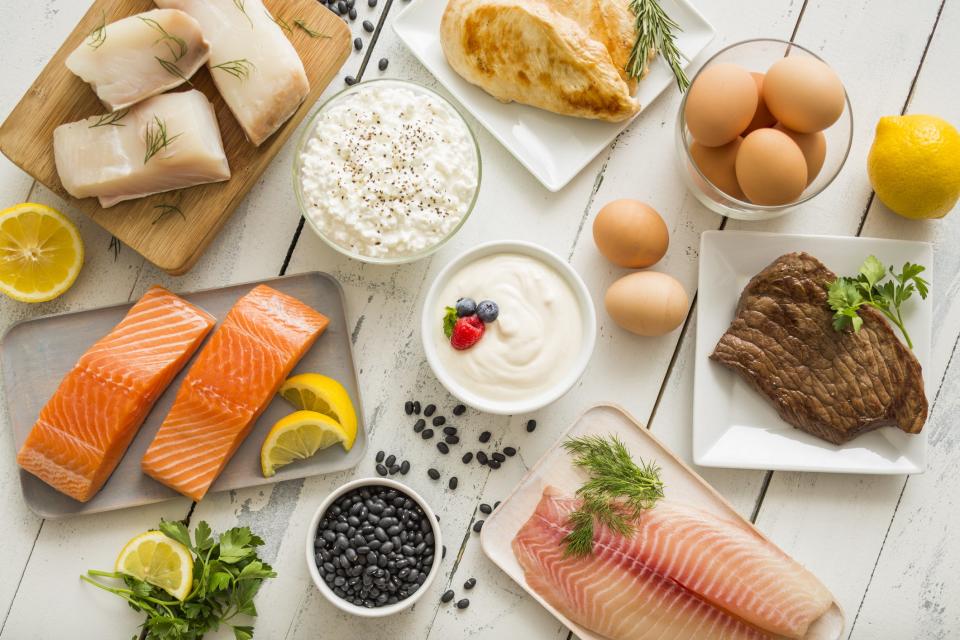Maggie McCracken
Updated
The ketogenic diet has never been more popular, with celebrities jumping on board and even Trader Joe’s catering to the keto crowd. Unfortunately, though, the low-carb, high-fat diet has drawn criticism from some who claim that it’s just not healthy to eat “that much meat.” But wait — is the keto diet actually very meat-heavy? Not really!
If you’re embarking on a ketogenic lifestyle, you should know that you actually can’t eat a ton of meat on the keto diet. In fact, eating too much protein can kick you out of ketosis, so while meats are definitely okay in moderation on a keto diet, they shouldn’t be its number one staple. Here’s the scoop.
Protein and Keto
Meat — especially the cuts of meat that people eat most often, like chicken breasts and steaks — are high in protein content. That’s no mystery, but when it comes to achieving ketosis (a state where your body burns through its stores of glucose, and turns to burning fat instead), it’s important not to consume too much protein.
That’s because your body has the ability to make glucose out of protein through a process called gluconeogenesis. When this happens, your body reverts to burning glucose (rather than fat) for energy, taking you out of ketosis. A 2011 study confirmed that “[Low-carbohydrate/high-fat diets] must be high in fat, but also low in protein contents to be clearly ketogenic. ”
The Best Meats for Keto
Though everyone is different, the standard ratio of macronutrients for a ketogenic diet is 75 percent fat, 20 percent protein, and five percent carbohydrate. This means that the majority of each meal — in fact, a WIDE majority — should be non-meat sources of fat. Only about one-fifth of your meal should be protein.
If you’ve done that math, that makes high-protein meat choices, like skinless chicken breasts or fish, things you should only eat sparingly. Here are some of the meats with the best fat-to-protein ratio. But keep in mind: Even these high-fat meats have plenty of protein, so they shouldn’t be eaten at every meal.
Fatty cuts of steak (NY strip, ribeye, brisket)
Nitrate-free, unprocessed bacon
Skin-on chicken thighs and legs
Skin-on fatty fish, such as salmon
Offal (organ meats such as liver, cheek, and heart)
The Best Non-Meat Fats for Keto
With meat playing a supporting, not starring, role in the keto diet, you’re probably wondering what *should* comprise the majority of your meals.
Low-carb and non-starchy veggies like spinach and kale are great for keto and are ideal carriers for non-meat fats. While some keto fans opt for dairy, others take a more purist approach, sourcing their fats from less processed sources. These are the fats you should be using to reach your keto goals:
Animal fats such as lard, duck fat, and bacon grease
Ghee or organic butter
Olive oil
Coconut oil
Avocados
Olives
Eggs
Have you tried the keto diet? What are some of your favorite sources of healthy fats? Tweet us at @BritandCo and let us know.
(Photo via Getty)
